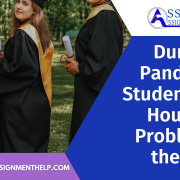Within this reflection, I will be examining one of my personal relationships from two perspectives. In our textbook, there are many theories that we can apply to our personal relationships, and it is those very theories that I will be applying to my relationships. At this point in life, we are forming new relationships every day, and how we go about that formation can be analyzed in depth. The theories in our textbook are very useful when breaking down relationships to the finest detail. The first theory I will use to break down my relationship is Knapp’s model of relationship development and dissolution. This model analyzes a relationship from the first conversation to the last, which is perfect for this reflection. The second theory I will apply is Sternberg’s triangular theory of love, which demonstrates the different types of love one can feel/have within a relationship. After applying these two theories to my past personal relationship, I will have a better understanding of how my relationships form and how they function.
For Knapp’s model of relationship development and dissolution, I will be talking about me and my ex-girlfriend Meagan’s relationship. As the model starts off, the first step is simply initiating the relationship and simply reducing your uncertainty of the other person. Meagan and I met through mutual friends that go here to UTK. She was roommates with a girl I went to High School with named Allison. Allison introduced us to each other, and from there the relationship took off. In the first couple months, I knew her and she knew of me, but we were not that close, we would just find ourselves at the same gatherings since we had mutual friends. As the months went on, I started to participate in the experimenting stage of relationship development. We exhibited this part of the model at parties, participating in small talk together, but nothing too personal was being disclosed, just basic conversation. After a few more months, I could see that the relationship was intensifying. We had a mutual awareness of the relationship and we could both tell that it might be going somewhere. After we had established that we were friends-with-benefits, it was then that we started the integrating phase of Knapp’s model. Friends-with-Benefits is defined as “A friendship in which partners engage in sexual activity but do not define the relationship as romantic” (Solomon & Theiss, 2013, 257). We could only do friends-with-benefits so long until we started to have feelings for each other. After talking with her friends and confirming with them that the feeling I had for her was mutual, I asked her to be my girlfriend. We formed a relationship through public ritual, so we entered the final part of relationship development, the bonding stage. We became exclusive partners and we started to completely connect on a personal level for months.
With every relationship there are complications, it wasn’t until three or four months into Meagan and I’s a relationship that is started to notice them. The first step of the dissolution process is differentiation, which in the case of our relationship, started off with simple disagreements. As the severity of the disagreements worsened, I found myself starting to fall into the circumscribing stage of the model. I found myself avoiding certain topics so that we would not fight. It was at this point of the relationship that I started to have relational uncertainty. Relational uncertainty is referred to as “generally to the lack of knowledge people have about their relationships, and it includes three kinds of doubts. Specifically, self-uncertainty involves your questions about your own involvement in a relationship, partner uncertainty refers to doubts that you have about your partner’s commitment to the relationship, and relationship uncertainty includes your doubts about the very nature of the relationship” (Solomon & Theiss, 2013, 246-247). I was unsure where this relationship was going, and I knew that it was most likely going to end soon. As the doubts started to pile up, the less I texted or talked to her. I started to see her less and less every week, our excuses for not seeing each other included being too busy with school or having to work too often. The details I listed previously closely align with the stagnation and avoiding stages of the relationship dissolution. I found myself having to work harder and harder to try and save the relationship. As I had come to the realization that things were not going to work out, I decided to terminate the relationship as smoothly as possible. In every breakup, the couple tries to remain friends, but most of the time there is bad blood. I and Meagan don’t really talk anymore but looking back at it I enjoyed our relationship. After applying the Knapp model to my most recent intimate relationship, I found that I learned a lot about how the relationship came about and also how it dwindled off.
I will now apply Sternberg’s triangular theory of love to my and Meagan’s relationship. The goal that this theory strives for is Complete/consummate love which is defined as “When relationships are characterized by intimacy, passion, and commitment” (Solomon & Theiss, 2013, 269). As it pertains to my and Meagan’s relationship, we never expressed our love for each other. So, most of where our relationship was spent was the liking sector of the model, which is just intimacy alone. If our relationship strayed towards anything else it would most likely be Romantic Love, where intimacy and passion coexist. The commitment aspect of Sternberg’s model was not present during our relationship which is most likely why we never reached complete and consummate love, and why we evidently broke up. At our relational peak, I would say that you could describe our relationship as Eros, which is referred to as “Love characterized by beauty and sexuality” (Solomon & Theiss, 2013, 270). Although we were physically attracted to each other, that does not mean it’s a perfect relationship. After applying Sternberg’s theory to my and Meagan’s relationship, I see that it was our lack of commitment that led to our demise.
After writing this reflection, I have gained great insight on how a relationship comes about between two people. Knapp’s model was an excellent tool to see the rise and fall of a relationship, but what the model lacked was a more in-depth look of how the relationship transitions from each step of development or dissolution. Sternberg’s theory was excellent for displaying the three main components of love (intimacy, passion, and commitment), but it would be nice to see how and why a relationship moves around the different sectors of love. After writing this reflection I have become more aware of how interpersonal relationships come about, and in the future, I will apply these theories and models to my relationships as they form.
References
Solomon, D. H., & Theiss, J. A. (2013). Interpersonal communication: Putting theory into
practice. New York, NY: Routledge.











